How to draw perspective confidently : Ultimate guide for beginners ( 10 tips )
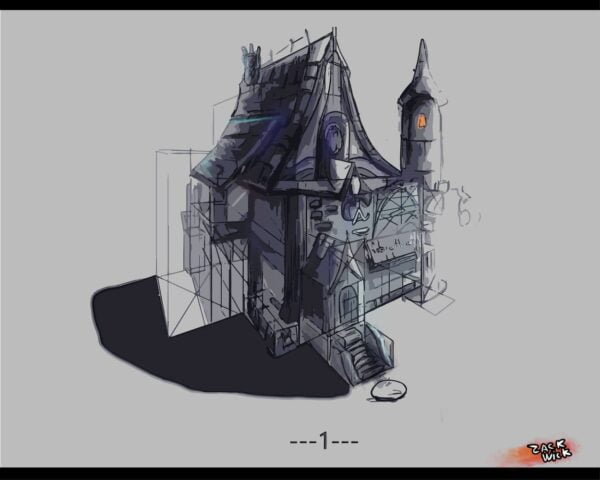
Table of Contents
- Definition of perspective
- In this article you'll see
- Before talking about it ...
- How to draw perspective ( horizon line )
- Vanishing point:
- Station point
- What are the different type of perspective ?
- One-point
- Two-point
- Original tip :
- Three-point
- Multi-point
- Atmospheric perspective
- How is it applied (in practice )
- Main reference to learn more :
- Drawabox (Youtube channel )
Definition of perspective
Definition of perspective ? How to draw perspective ? Perspective is the demon every Art-student refuse to face. Back in the day where i was an art student, i never felt concerned about this quote.
How i could be afraid from something i never saw before ? If we have to give a clear definition of Perspective. Perspective drawing is the distortion of an object through 3D space (space and time) by using vanishing points, grid and any other geometry laws in order to represent it efficiently on a piece of paper or a digital artwork …
In this article you'll see
Before talking about it ...
Some basic words that belong to the vocabulary of this universe may be required fundamentals to have in order to talk about perspective!
Straight lines are crucial in perspective drawing as they help create precise orthogonal lines that converge at vanishing points, establishing proper perspective in sketches.How to draw perspective ( horizon line )
Horizon lines are usually where land and sky meet. But this simple rule of thumb may vary if we add some various factors. For example, you may naturally put your horizon line always in the middle of your canvas, but that would be a mistake. A horizon line has to follow eye-level, station point, and many more components of perspective. A horizontal line represents the viewer's eye level and is crucial for establishing depth in illustrations. This line interacts with vanishing points and orthogonal lines to create a three-dimensional effect in artwork.
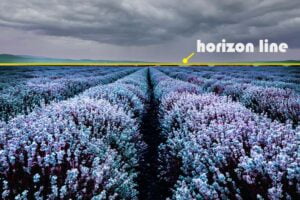
Vanishing point:
This is the point on the horizon line that objects typically converge, or disappear. In one-point perspective, there is just one vanishing point where parallel lines converge, creating a focal point that affects the composition and depth of the image. The number of vanishing points on a single horizon line depend on your configuration (linear or multi-point).
Station point
A station point is a location or vantage point from which an artist or exhibitor intends an observer to experience an artwork.What are the different type of perspective ?
One-point
Any vanishing point belongs to a horizon line. Whenever you want to draw a scene, a character, or copy one that already exists, you will always need to spot how many vanishing points the scene contains. In this image, this is the example of one vanishing point, usually done to draw the front view of an object without any distortion. In one-point perspective drawing, all lines converge at the same vanishing point on the horizon, which helps in accurately depicting depth and perspective.
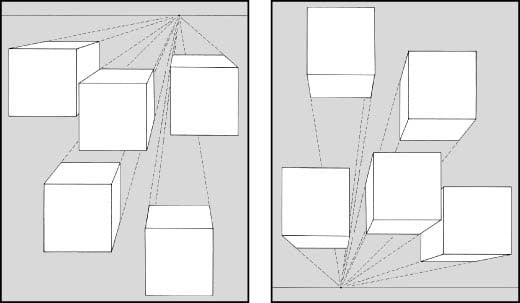
Two-point
Two point basiclly exist for scene with two vanishing point converging on the horizon line, which can be out of the plane to give more depth and less distorsion.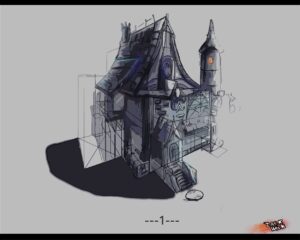
Original tip :
In this example, we wittingly placed the horizon line vertically so that you see how you can trick the viewer feeling with just two point perspective in order to make him believe it’s a scene of three point perspective.
Horizontal and vertical lines are crucial in creating depth in perspective drawing, as they represent the true shapes of surfaces facing the viewer and help in sketching accurate structures using a perspective grid.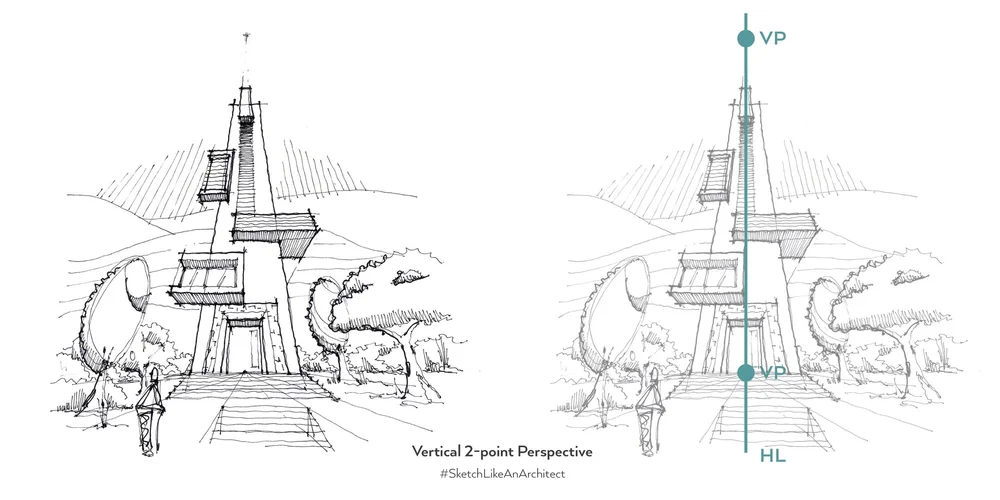
Three-point
Three point is a configuration where two vanishing points are on the horizon line and the third go under or above the horizon line in order to express depth to the viewer. In this messy cube i drew, you can see how the principle work for a worm eye view. A third vanishing point go below the horizon line. The same has to be done if you want a bird eye view (top view )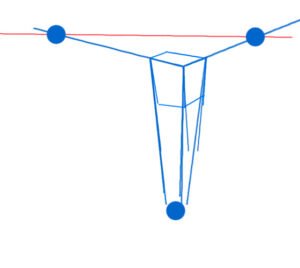
Multi-point
Multi-point is a scene where every object has it's own vanishing point. This is more likely to happen in real life unlike linear perspective that has a real limited use.
Atmospheric perspective
It's a common factor to all artworks that include distance in their scenes. Especially landscape where you can observe it directly in distant mountains. In physic, it occurs when particle in the air, such as water vapor and smog affect what is seen.
How is it applied (in practice )
As the distance between the viewer and the object increases, here is what happens to the objects that are in the background (far in the distance):
- The contrast between the object and the background decreases. In most cases, the value of the object far in the distance will become lighter.
- The colors of the object become less saturated.
- The colors of the object shift around the color wheel toward the background color (depending on the sky color).
Main reference to learn more :
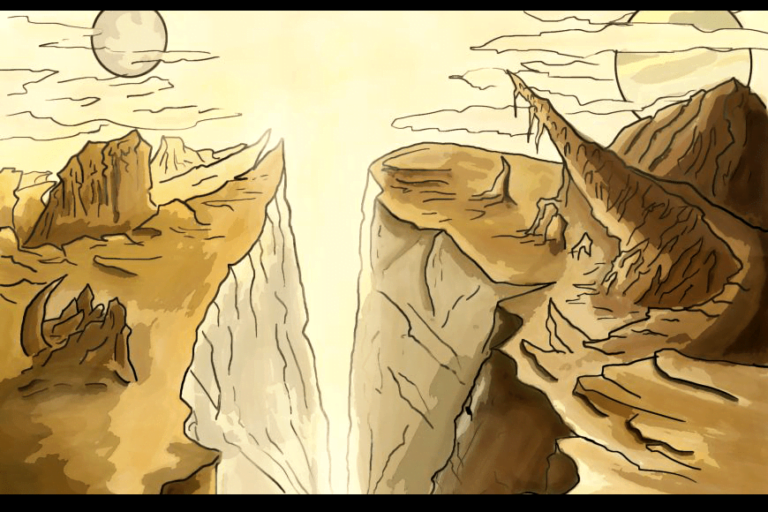
Now that you learned some basic definition, we encourage you to expand your knowledges a bit more. There is thousand of books and art reference out there that can make you learn perspective. But without the right guidance you won't be able to make it. That's why we gathered some of the most important external reference about technical perspective :



